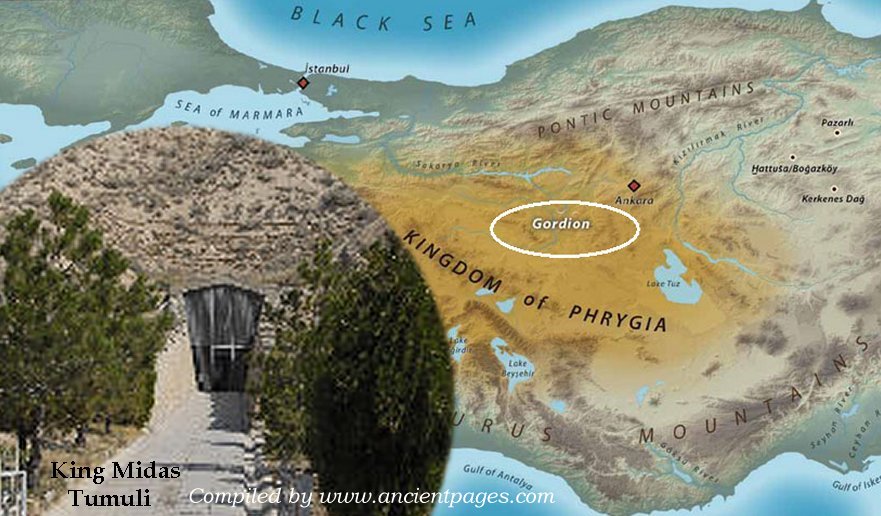Ancient City Of Gordium, Gordian Knot And Skeleton In Tumulus Of King Midas
A. Sutherland - AncientPages.com - The ancient city of Gordium (Gordion) in Turkey was once the capital city of ancient Phrygia and today is known for its more than 2000-year-old cemeteries and other ancient remains that remind of the city's great history and the region.
The cemeteries related to this ancient site narrate the lifestyle of the Phrygians, an old Iron Age people of central Anatolia. They probably settled in the area after the collapse of the Hittite dynasty.
Gordium was the Phrygians' political, cultural and commercial capital, located at the site of modern Yassihoyuk village, near the Turkey capital, Ankara.
Gordium And Its Turbulent History
Marked by the ancient road between Lydia and Assyria/Babylonia, Gordium was under the influence of many cultures. It was occupied as early as 3000 BC and between 2000 and 1200 BC.
The city was an essential Hittite settlement inhabited by many Assyrian colonists.
The power of Gordium increased when the Phrygians settled in the area in the 9th century, and the city's highest prosperity is related to the period between 750-700 BC.
However, similar to other ancient cities, also Gordium had a long, turbulent period that started between 700 and 670 BC when both Cimmerians (believed to be the nomads of Iranian or Thracian origin) and Scythians invaded the Phrygia. The city's monumental tombs and buildings were destroyed during the occupation until the end of the 6th century. On the ruins emerged the Lydian Empire, and its people rebuilt Gordium and helped to preserve the Phrygian culture at least for a while but not for long.
View of the Tumulus MM grave goods, 1957. Excavation photograph of the interior of the tomb chamber, Tumulus MM, Gordion, taken in 1957 by a photographer from the University of Pennsylvania Museum team. Shown leaning against the east wall of the tomb are the two inlaid wooden serving stands (A and B) and the inlaid table. Lying nearby are the remains of several plain wooden tables as well as many fine bronze vessels, all of which had fallen to the tomb floor. Source: Gordion Excavations, University of Pennsylvania Museum of Archaeology and Anthropology, Philadelphia, PA Date of photograph: 1957
In 547-546 BC, Cyrus the Great and his army defeated the Lydians and built a new settlement at Gordium. The place was unfortunately destroyed, however, not by enemies but by an earthquake in about 400 BC. By the time Alexander the Great arrived here in 334 BC, Gordium had already lost its importance. According to ancient tradition, in 333 BC, Alexander the Great cut the Gordian Knot and took the city out of Persian control in 278 BC. Eventually, the Gauls destroyed it. By 200 AD, the city was abandoned entirely.
Great Tumulus Of Midas
Many believe the Midas Mound Tumulus, or "Midas Tumulus," located in central Turkey at the site of the ancient city of Gordium, was once built by the Phrygians for their famous king Midas.
Approach road to the South Gate at Gordion. Image credit: Gordion Archive, Penn Museum - CC BY-SA 4.0
It is 300-meter (984 ft) long in diameter and 60-meter (196 ft) high. Today, it is the second biggest after the Alyattes tumulus in western Turkey. The tomb, identified as belonging to king Midas, was excavated in 1957. Various priceless artifacts unearthed inside included vases, wooden statues, vases, bronze cauldrons, silver and gold jewelry, images of Cybele, the Mother Goddess, and even furniture decorated with ivory inlay dated to pre-Cimmerian times.
The tomb was described as an impressive, hermetically sealed chamber located deep down in the center of the tumulus. The tumulus was artificially formed of many stones and soil, to a height of approximately 150 feet.
The findings also included "the body of a 60-65-year-old male. He lay on a thick pile of blue and purple-dyed textiles, the colors of royalty in the ancient Near East. In the background, you will see what really got us excited: the largest Iron Age drinking-set ever found–some 157 bronze vessels, including large vats, jugs, and drinking-bowls that were used in the final farewell dinner outside the tomb.
Like an Irish wake, the king's popularity and successful reign were celebrated by feasting and drinking. The body was then lowered into the tomb, along with the remains of the food and drink, to sustain him for eternity or at least the last 2700 years…" described Patrick McGovern, Professor of Anthropology at the University of Pennsylvania Museum in Philadelphia.
Legendary King Who Existed
King Midas was the most famous, almost legendary monarch of Phrygia. Based on contemporary Assyrian sources that date back between c. 718 and 709 BC, the king was called Mit-ta-a.
Aerial overview of the Citadel Mound of Gordion. Image credit: Gordion Archive, Penn Museum - CC BY-SA 4.0
Except for countless legends about king Midas, there are also more reliable ancient sources mentioning this great Phrygian king.
The Greek historian Herodotus wrote that King Midas was the first foreigner who made an offering at the sanctuary of Apollo at Delphi.
In "The Legend of Midas," Strabo (64 or 63 BC – 24 AD), a Greek philosopher and historian, wrote that when the Cimmerians invaded Asia Minor in 710/709 BC, king Midas had to ask for help from the Assyrian king Sargon II.
Eventually, the Cimmerians conquered Phrygia in 696–695 BC, and his city, King Midas, committed suicide by drinking bull's blood poison rather than face capture.
Updated on July 11, 2022
Written by A. Sutherland – AncientPages.com Senior Staff Writer
Copyright © AncientPages.com. All rights reserved. This material may not be published, broadcast, rewritten or redistributed in whole or part without the express written permission of AncientPages.com
Expand for referencesMore From Ancient Pages
-
 Mysterious Ancient Warrior With 12 Toes Puzzles Archaeologists
Featured Stories | Jun 24, 2025
Mysterious Ancient Warrior With 12 Toes Puzzles Archaeologists
Featured Stories | Jun 24, 2025 -
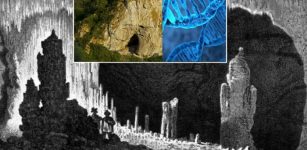 Neanderthals’ History Retrieved From Cave Sediments In Siberia And Spain – New Method
Archaeology | Apr 19, 2021
Neanderthals’ History Retrieved From Cave Sediments In Siberia And Spain – New Method
Archaeology | Apr 19, 2021 -
 Bacabs: Four Atlantean Gods Were Giants And Sons Of Itzámna, Maya God Of Heaven And The Sun
Civilizations | Jun 12, 2017
Bacabs: Four Atlantean Gods Were Giants And Sons Of Itzámna, Maya God Of Heaven And The Sun
Civilizations | Jun 12, 2017 -
 Oldest Canoe Ever Discovered In Maine – It Dates To 1280-1380 A.D
Archaeology | Jun 13, 2019
Oldest Canoe Ever Discovered In Maine – It Dates To 1280-1380 A.D
Archaeology | Jun 13, 2019 -
 Ancient Calendar Predicted The Coronavirus And Other Disasters In 2020 – History Researcher Says
News | Mar 24, 2020
Ancient Calendar Predicted The Coronavirus And Other Disasters In 2020 – History Researcher Says
News | Mar 24, 2020 -
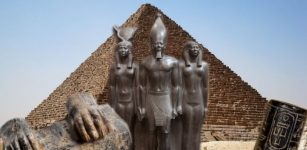 Pharaoh Menkaure – Egyptian Ruler Who Tried To Outsmart Fate
Featured Stories | Nov 18, 2020
Pharaoh Menkaure – Egyptian Ruler Who Tried To Outsmart Fate
Featured Stories | Nov 18, 2020 -
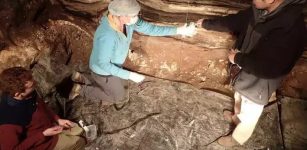 DNA Reveals 300,000 Years Of Hominin And Animal Presence At Denisova Cave
Archaeology | Jun 26, 2021
DNA Reveals 300,000 Years Of Hominin And Animal Presence At Denisova Cave
Archaeology | Jun 26, 2021 -
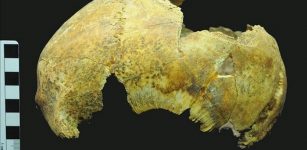 5,000-Year-Old Russian Skull Offers Evidence Of Brain Surgery Made With Stone Scalpel
Archaeology | Oct 23, 2020
5,000-Year-Old Russian Skull Offers Evidence Of Brain Surgery Made With Stone Scalpel
Archaeology | Oct 23, 2020 -
 Legacy Of Queen Hatshepsut’s Temple In Luxor – New Valuable Finds Announced
Archaeology | Jan 9, 2025
Legacy Of Queen Hatshepsut’s Temple In Luxor – New Valuable Finds Announced
Archaeology | Jan 9, 2025 -
 On This Day In History: ‘Earl of Northumberland’ Thomas Percy Executed Because He Was Catholic – On August 22, 1572
News | Aug 22, 2016
On This Day In History: ‘Earl of Northumberland’ Thomas Percy Executed Because He Was Catholic – On August 22, 1572
News | Aug 22, 2016 -
 Beautiful Ancient Egyptian Jewelry From The 26th Dynasty Unearthed At Karnak Temples
Artifacts | Mar 3, 2025
Beautiful Ancient Egyptian Jewelry From The 26th Dynasty Unearthed At Karnak Temples
Artifacts | Mar 3, 2025 -
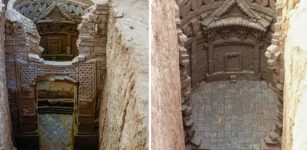 Incredible 700-Year-Old Tombs With Beautiful Decorations And Carved Bricks Found In Shandong, China
Archaeology | May 22, 2023
Incredible 700-Year-Old Tombs With Beautiful Decorations And Carved Bricks Found In Shandong, China
Archaeology | May 22, 2023 -
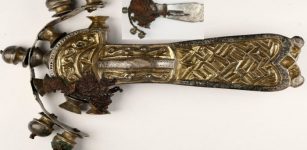 5th-Century Tomb With Finds Of Historical And Artistic Value Discovered In Eastern Bohemia
Archaeology | Mar 8, 2021
5th-Century Tomb With Finds Of Historical And Artistic Value Discovered In Eastern Bohemia
Archaeology | Mar 8, 2021 -
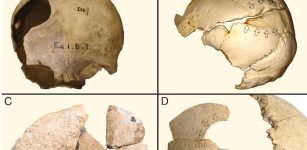 Violence Was Widespread In Early Farming Society – New Study
Archaeology | Jan 23, 2023
Violence Was Widespread In Early Farming Society – New Study
Archaeology | Jan 23, 2023 -
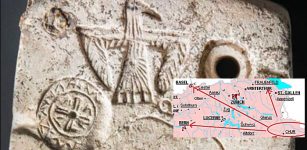 1,000-Year-Old Multi-Shaped, Double-Sided Mold For Jewelry Found In Swiss City Of Chur
Artifacts | Jul 26, 2020
1,000-Year-Old Multi-Shaped, Double-Sided Mold For Jewelry Found In Swiss City Of Chur
Artifacts | Jul 26, 2020 -
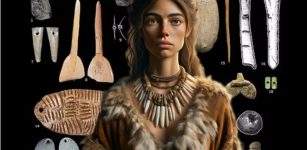 Stone Age Europe Had Nine Distinct Cultures – Ancient Jewelry Reveals
Archaeology | Feb 3, 2024
Stone Age Europe Had Nine Distinct Cultures – Ancient Jewelry Reveals
Archaeology | Feb 3, 2024 -
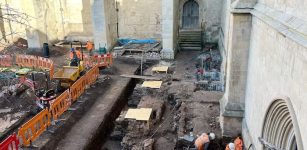 Ancient Roman Street And Buildings Discovered Beneath Exeter Cathedral
Archaeology | Apr 4, 2023
Ancient Roman Street And Buildings Discovered Beneath Exeter Cathedral
Archaeology | Apr 4, 2023 -
 Prehistoric Bone Tool ‘Factory’ Shows Human Ancestors Had Advanced Reasoning Skills One Million Years Earlier Than Believed
Evolution | Mar 11, 2025
Prehistoric Bone Tool ‘Factory’ Shows Human Ancestors Had Advanced Reasoning Skills One Million Years Earlier Than Believed
Evolution | Mar 11, 2025 -
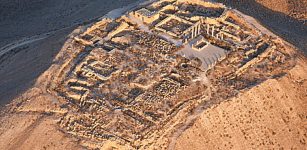 The 2,000-Year-Old Citadel Of Machaerus – A New Look For An Ancient Site
Civilizations | Oct 30, 2015
The 2,000-Year-Old Citadel Of Machaerus – A New Look For An Ancient Site
Civilizations | Oct 30, 2015 -
 Notre Dame Is On Fire! Can The Magnificent Cathedral Still Be Saved?
News | Apr 15, 2019
Notre Dame Is On Fire! Can The Magnificent Cathedral Still Be Saved?
News | Apr 15, 2019

